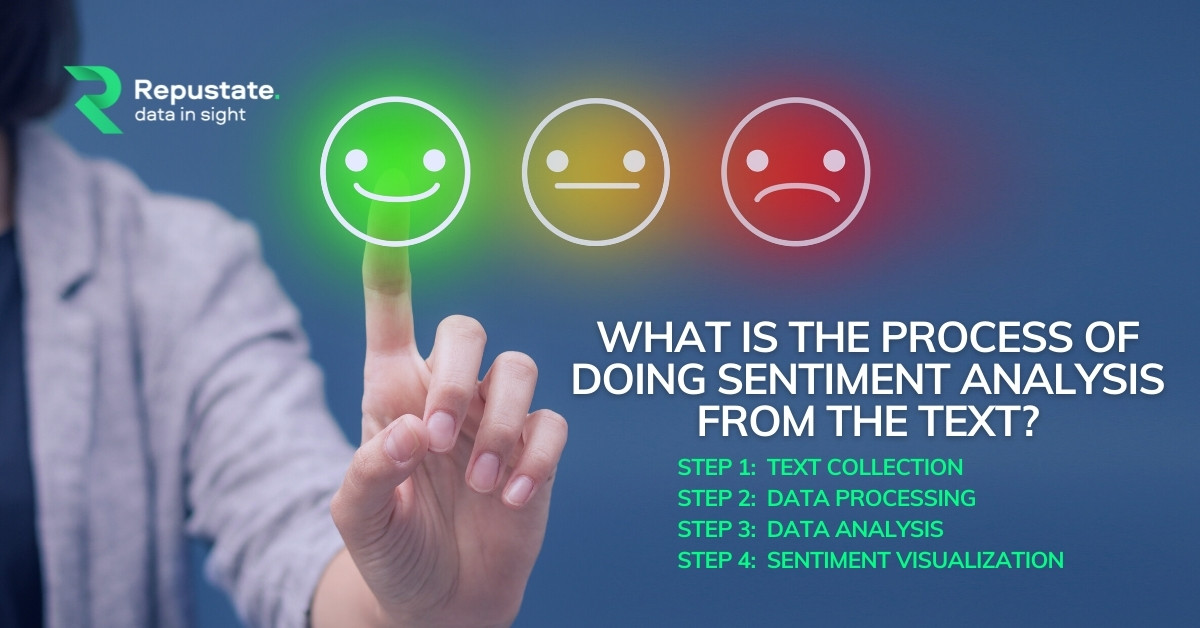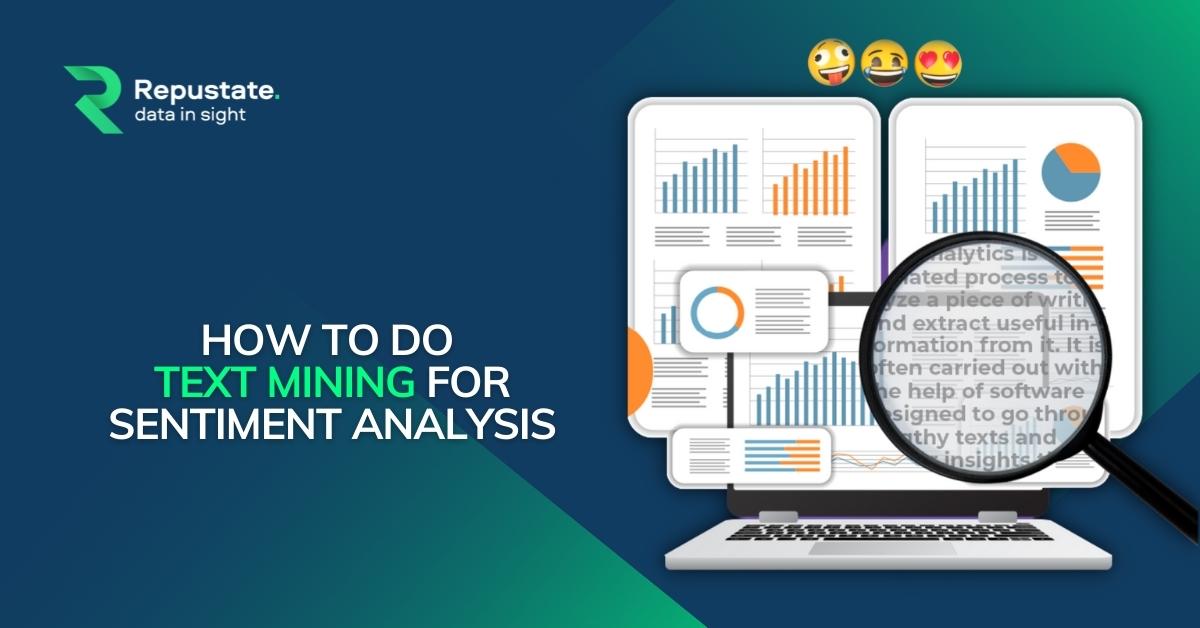How To Do Text Mining for Sentiment Analysis
Text sentiment analysis is crucial in a brand’s lifecycle. Consider for a moment how many mentions or discussions there are about a company’s product or customer service on social media platforms, news feeds, news articles, review sites, and forums. In addition, businesses also gather enormous big data in intra-organizational and external emails, product marketing collaterals, PR content, presentations, videos, and more.
When sentiment analysis from text is applied, this gigantic pool of data helps a company gain actionable and relevant insights. AI-enabled sentiment analysis thus helps to improve products, better customer experience (CX), increase efficiency in operations, and in general, makes analyzing data simpler through automation.
Text mining uses machine learning and natural language processing (NLP) automatically for sentiment analysis. In this article, we will look at this process in detail.
What Is Text Sentiment Analysis?
Sentiment analysis from text is done in order to identify subjective information in it and understand the opinions, feelings, and sentiments emanating from the text. Typically, this process involves any source of text data and can include surveys, emails, social media, news sites, and feeds, and more.
A perfect example would be where businesses perform sentiment analysis on text to gain valuable insights from it and understand how their customers truly feel about their products or services
Why Do Companies Need Text Mining for Sentiment Analysis?
When we consider what text sentiment analysis is, it’s understandable that the insights it provides can help businesses improve their products, processes, and operations and, can add a lot of value for the business. Let’s look at some real-world applications for text sentiment analysis.
1. Voice of the Customer
Voice of the customer analysis is the process where you can analyze customer feedback and gain actionable insights from it. These insights help you understand customer behaviour better and conduct marketing - conversion gap analysis. With this understanding, a company can know where it is performing well and where its offering might need some improvement. As a result, you can tailor your customer journey to best meet customer requirements. Insights from Facebook advertising, survey data analysis, TikTok data insights, and other machine learning-driven consumer deep dives can go a long way in helping a company generate more revenue.
2. Client Nurturing
With sentiment analysis from text, businesses can analyze text data from a variety of sources including client forums, support tickets and emails, call logs, and social media feeds to ensure that they are nurturing current and potential clients. By using video content analysis, companies can extract insightful information from video interviews, they can also develop client-specific marketing collateral as well as nurture campaigns.
Enterprises that have clients across the globe can, through a sentiment analysis API that has a multilingual capability like Repustate’s, benefit from the insights regardless of language or geography. They can not only enhance their brand presence but also ensure that their client nurture campaigns are targeted and result-driven.
3. Reputation Management
Text sentiment analysis allows you to manage and maintain your footing in a tough market while helping you boost your reputation effectively and efficiently. When you can keep a tab on what’s circulating about you on social media, business articles, consumer forums, etc, you can be alert to negative feedback and address them immediately. In a business setting where even a small oversight can cause a major PR crisis and you need to constantly be ahead of cut-throat competition, having an AI-enabled sentiment analysis platform to analyze all that’s written about you can be a boon.
4. Social Media Listening
The social media scene is so vast that you have different channels for different user personas. Where Facebook is considered for the mature user, Twitch is targeted towards gamers. With articles literally dedicated to helping you become an overnight star on YouTube, and Instagram becoming the favourite channel for celebrities, social media has turned more or less everything into a popularity contest.
That’s why when your consumer base turns to social media to express their opinions and sentiments about you, it’s not something that you should take lightly. With the help of social media listening, businesses can use text sentiment analysis to keep a tab on mentions and extract sentiments from social feeds.
An advantage of social media is that posts are generally spontaneous and informal which means that customers will often include information they won’t include in a survey. As a result, you can learn a lot more from social media whether it’s time to add a new product, or re-brand to make yourself more current and in with the times.
5. Surveys and Reviews
Despite the information businesses can obtain through social media, surveys and consumer reviews are extremely crucial in providing specific information about how customers feel about a brand or a service. Sentiment analysis from text can recognize and categorize topics and themes in surveys and reviews through the application of natural language processing and aspect-based sentiment analysis. This gives you very specific information about your offerings and the corresponding customer sentiment to each aspect of your offering. With such in-depth information, you can develop more targeted action plans for increasing productivity and growth.
Discover more: Sentiment analysis on amazon reviews.
6. Search Engine Optimization
Search engines like Google and Bing use text mining to understand what a specific website is about and get greater insights into the quality of the website’s content. In this way, these search engines can offer internet users the most relevant content based on their specific queries.
Internally, businesses can also use text mining in this same manner for their knowledge management. Through sentiment analysis from text, a company can categorize all documents including videos and text data, and allow employees to semantically search for any content they might need through semantic search and machine learning capabilities like search inside video.
7. Voice of the Employee
Text sentiment analysis can also help businesses improve employee satisfaction and engagement, resulting in higher employee retention rates. In other words, sentiment analysis from text can help a company to not only keep but also attract the best talent. It’s not a secret that candidates often visit websites such as Indeed or Glassdoor to read about a new company they have an interview at. Understandably, they want to make sure that the organization is a good fit for them, and has a pleasant work environment.
While some organizations use shortcuts by coercing employees to post positive reviews like SpaceX did in 2017 and many other companies do it even now, good candidates know what they bring to the table and therefore are aware of these fake reviews and make an informed decision. Sentiment analysis from text data can help a company look for more sincere ways to boost the happiness quotient of its employees. It can help them listen to the voice of the employee and ensure that the workplace is a positive and nurturing place.
What is the Process of Doing Sentiment Analysis From Text?
From the use cases above, we can see how text sentiment analysis can add significant value for any business. To make sure that you use sentiment analysis from text to improve your processes or products in the most efficient way, you need to use the right process to extract the sentiment from text.
With that in mind, let’s look at the process of doing sentiment analysis from text a bit closer.

Step 1: Text Collection
The first fundamental step in the process is collecting the text to be analyzed. This is a crucial step in the process as the remaining steps depend on the quality of the text data that has been gathered.
Firstly, text data can be gathered and uploaded through APIs. This will typically be the case for data collected from, for example, social media platforms and news sites. Data can also be uploaded manually to the sentiment analysis API from, for instance, a CRM tool.
Step 2: Text Processing
The next step in the process is to process the text data. During this step, all text is extracted from the gathered data and readied for the sentiment analysis process. Here, for example, video content analysis will also extract text from video files and captions and audio transcription will convert any audio data to text, if necessary. This is an important step, especially when analyzing text from social media because social media data can be inundated with emojis, special characters, hashtags, user-generated videos, code switches, and abbreviations that people use during informal conversations.
Most social media listening tools do not take emojis into account as they are non-text. But this can lead to incorrect interpretations as many a time, sarcastic remarks are followed by emojis, and without the emoji to deliver the punchline, the sarcastic comment can be taken as positive by the machine learning algorithm. For example, a text that says, “Great! I only have to walk through half a mile of snow ” can be read as a positive one without the eye roll emoji.
Step 3: Text Data Analysis
Before text sentiment analysis can be performed on the data, the model needs to be trained first. For this, a pre-processed training dataset that’s manually labeled will be used to train the model. During this step, the dataset will also be trained for different languages if multilingual data is used.
Also, custom tags for all the themes and aspects that will be identified need to be created. Following this, the topic classifier will attach a theme to text and, during the final step, the sentiment analysis API will isolate each theme and aspect in the text and analyze it for sentiment.
Sentiment scores will be assigned between -1 and +1 while neutral sentiment may be classified as zero. Based on these scores, the sentiment analysis API will calculate an average score as the overall sentiment.
Step 4: Insights Visualization
Once the sentiment analysis process is complete, the sentiment analysis API will present the data as graphs and charts on its sentiment visualization dashboard. Through this visualization, it will be clear which aspects received high scores and which received low scores. In other words, the dashboard, for instance, enables businesses to see where they’re performing well and where they need to improve.
Conclusion
There’s a wealth of data to be found on social media platforms, news sites and feeds, forums, surveys, emails, and the like. AI-enabled sentiment analysis from text allows a company to automatically extract emotions pertaining to different aspects of the business - whether its products, clients, employees, or the end-user of their products or services. Repustate’s feature-rich and intuitive platform empowers you to fish out deep insights hidden in big data spread across a multitude of sources. And because Repustate’s proven AI capability for text sentiment analysis also boasts reading a language natively, without using translations, it means that you can get text analysis in 23 languages as accurately as they would be in English.
 Home
Home
 Dec 31, 2021
Dec 31, 2021

 Jeremy Wemple
Jeremy Wemple
 Dr. Ayman Abdelazem
Dr. Ayman Abdelazem
 Dr. Salah Alnajem, PhD
Dr. Salah Alnajem, PhD
 David Allen
David Allen

 Repustate Team
Repustate Team

